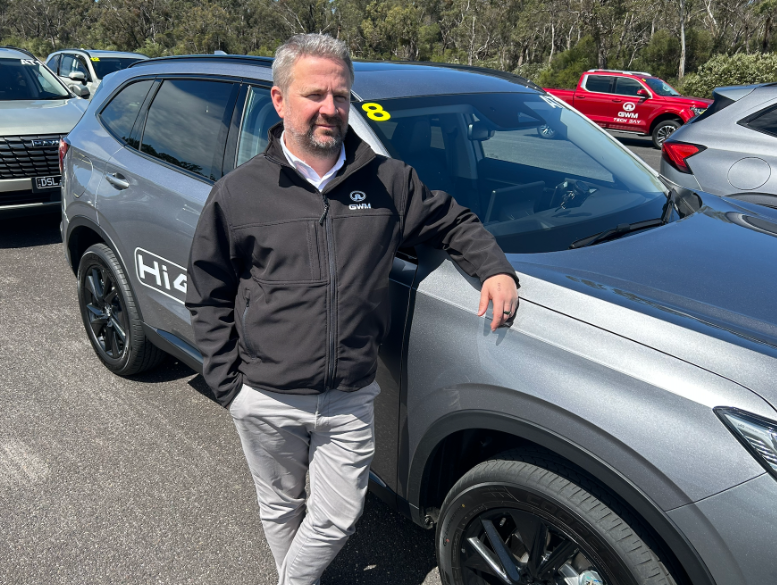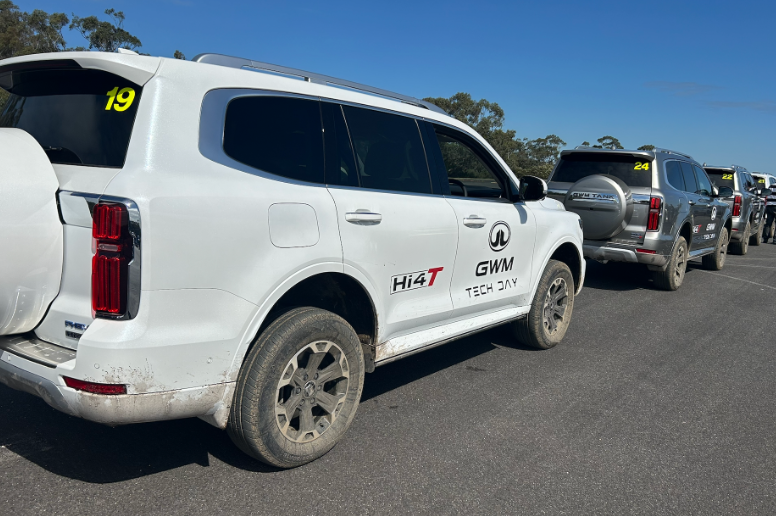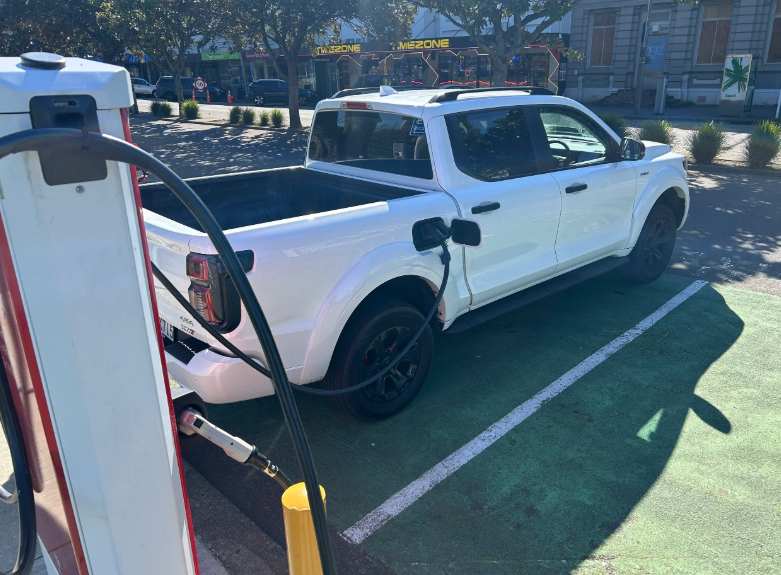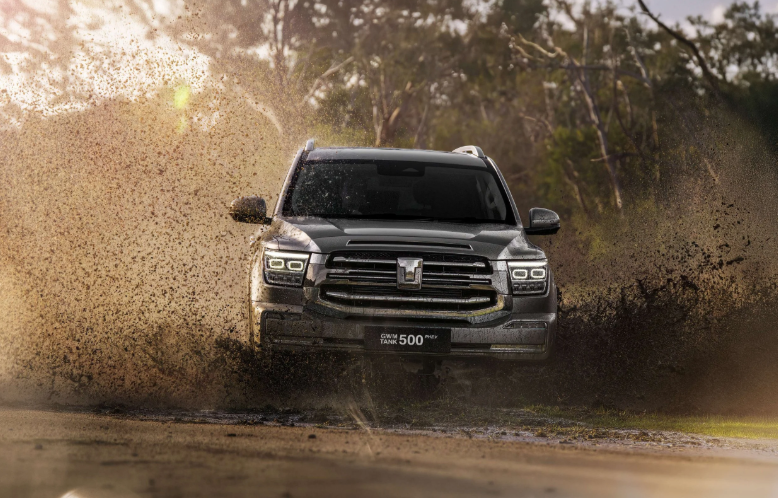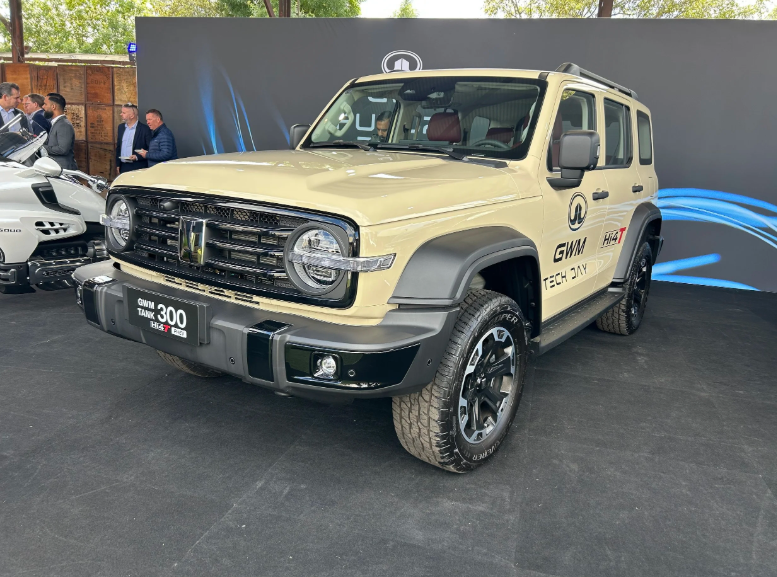LATEST NEWS
GWM confident challenging NZ market big guns
Richard Bosselman
October 9, 2025
‘We are aiming to get into the top eight next year and the year after into the top five’ says highly-credentialed, newly-appointed country manager.
ASPIRATION by GWM to become a top five automotive brand in the region is as achievable in New Zealand as the make believes it is in Australia.
That view is held by Cameron Thomas (above), recently appointed by the Chinese brand to be its country manager.
Thomas has plenty of experience in lifting a brand’s status.
He started his new job in April fresh from Ford New Zealand, where most of his more than 20 years of sales, marketing and leadership experience was gained. Before then, he was a fast riser at Holden NZ.
But it was at Ford where his star really rose. His priority role there, as director of marketing, was the period in which the Ford Ranger became not only New Zealand’s dominant ute choice but also rose in some years to site as the country’s top-selling vehicle.
His arrival at GWM this year was a surprise turn that came just after the brand’s regional office, based in Australia, shared its strategic ideals.
The plan, in precis, is to be a top five maker across the Tasman by 2030; currently it is set to be end 2025 as No.7, assuming it pips arch-rival BYD.
That’s a big advance for a make that, with 17 years in business in Australia, is the longest-established Chinese make there.
For NZ to follow suit would require even more effort; the tenure isn’t quite as long but it is also further down the pecking order, as the 10th most supported new car operation when counts for its individual makes are accrued.
Stepping up to the same pace as the franchise in Australia would require the seller of Haval, Ora, Tank, Cannon utes and, from next year, Wey luxury product, to better MG, Suzuki and Subaru.
Also it needs to get clear air on BYD, which GWM Australia has bettered in recent monthly returns.
Thomas says Kiwis following the Australian example is by no means an impossible ask.
Speaking at a just concluded GWM tech expo in Melbourne that also involved a day of driving product at the Lang Lang proving ground near that city, the Auckland-based executive said GWM was strongly established in NZ and had built up a great reputation with its customers.
“I certainly think we can get into that level (as Australia) as well. That's our ambition.
“They're saying top three by 2030. We are aiming to get into the top eight next year and the year after into the top five, and then we'll probably reassess from there.”
That latter comment is an acknowledgement that, from thereon, it’s much steeper climb; in ascending order Nissan, Mitsubishi, Ford and and Toyota are tough nuts.
Toyota, of course, is an Everest in itself. Japan’s dominant maker has led this market for 37 years and achieves almost one in every three new car and light commercial sales.
Thomas says however progress unwraps, planning favours gradual sales growth to achieve a ‘sustainable’ place among the most popular car brands.
One perceived and increasingly important plus for GWM is having a strong plug-involved electrified portfolio.
These are great earners of carbon carbon credits, an increasingly valuable commodity in the scene.
Distributors are under increasing pressure to offset CO2 penalties hanging over much of their fare.
The Clean Car Standard is a burden; increased requirement to improve on average fleet emissions will impact again from end of year.
Thomas has expert knowledge of the scene; it was a speciality subject at Ford.
He sees it as simple scenario. Passenger fare with plugs are vital. Those that are earning credits, and have surplus to sell, will increasingly benefit.
GWM is in that camp. Every model line save the Cannon ute now affords a petrol hybrid option and most, the latest being the Haval H6 and the Tank 500 large SUV, can also offer mains-replenishing petrol drivetrains as well. All earn credits.
“We can generate credit. So from a compliance perspective, we've got a good balance of products as well, whether it's hybrid that customers are still asking for or that migration into plug-in hybrid.”
“So I think we've got a strong pathway into that top five. I think moving on from that top five is going to be difficult when you're getting into some of the more incumbent players, and that's going to be the fun and the challenge.
“We're 10 at the moment. MG is slightly ahead of us and then we see the likes of BYD, depending on how they're going in any given month. Then there are the incumbents, Suzuki, Subaru in that next step up.”
Of course, other auto brands also have ambitious sales targets, especially the Chinese ones.
New brand announcements from China seem an almost weekly announcement.
Thomas says GWM’s has at least been through its recognition period. The roots are well established and it has come far since 2020, when Great Wall rebranded as GWM and merged its Haval SUV sub-brand. He feels it is largely understood by car buyers and has credibility.
But the job is never done; his intent is to keep raising awareness of what GWM can offer across all the segments it operates in.
That task will be particularly important with Wey, which comes in the second half of 2026, with premium PHEVs.
The G9 large people carrier, which combines a 1.5-litre turbo petrol four-cylinder engine with two electric motors to deliver system output of 358kW/762Nm while promising an EV-only driving range of about 140km, was trialled by media at Lang Lang.
Also being sized up for potential introduction are two large SUVs, which Thomas declined to identify but have been subsequently revealed by an overseas’ report to likely be the large Wey Blue Mountain and the medium Mocha.
Thomas says with Wey, as with GWM’s other brands, it all comes down to enabling a positive experience.
“I guess it's the same analogy of bums and seats and getting people to drive them. It's when they really start to experience and buy into the technology that things happen.”
GWM Australia and New Zealand’s chief operating officer, John Kett, sees Thomas’ appointment aligning with his brands’ goal of building a stronger local identity here.
“This move aligns with our previously stated ambition — that we must look, sound, and feel like a Kiwi brand.
“Having local leadership on the ground is essential to building trust and maintaining strong connections with our customers and dealers.
“Our dealer network is engaged in the brand, and we’re confident that Cameron will play a pivotal role in leading GWM’s next phase of growth in NZ.”
Thomas is certainly a prize catch. His most recently held the role of network strategy director with Ford NZ and was also made a director of its local operations in February. He led development of retail and brand strategy, and oversaw a $800m annual revenue operation.
Was it hard to leave the Blue Oval? He replies by saying it’s a fantastic time to be with GWM.
“There's so much opportunity … we've had something like 20 odd, 30 odd percent year on year growth already this year. And with the portfolio that we've got coming into the next couple of years, it can obviously go only one way.”
But one recognition is that GWM residuals are strong.
“I haven't done a whole lot of analysis into residuals, but the feedback that we're getting is certainly that we are holding up relatively strongly.
“I guess maybe traditionally Chinese brands hadn't had the strongest residuals, but we're certainly seeing that aftermarket values are holding up and dealers are having good success in trading and selling as used cars.”
As a key architect of the process that lifted Ranger to the top, does he feel he can bring some of that special magic to GWM?
“I'd certainly be looking to try to leverage that experience into my current role. Yeah.”

